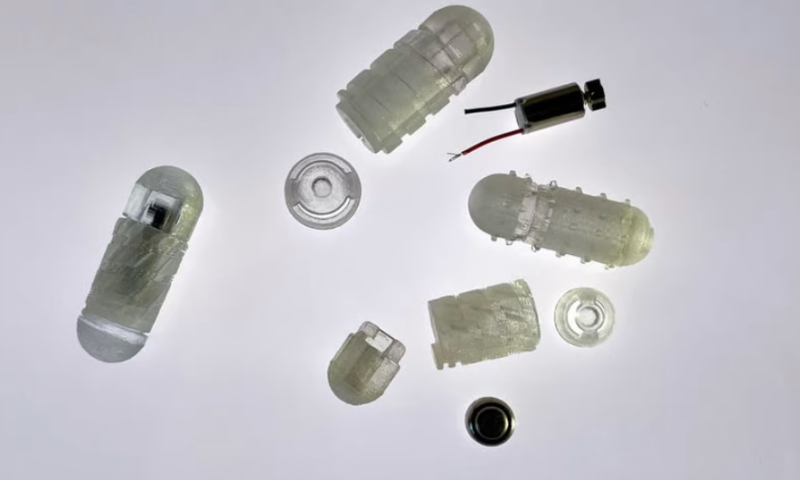One of the many barriers to getting drugs where they need to be in the human body lies in the digestive tract, where walls of mucus line the insides of the intestines. This layer can prove to be an especially tricky obstacle for converting large-molecule, biologic treatments such as insulin into an easy-to-take pill.
MIT’s solution? Burrow through it, using a robotic capsule that can tunnel its way through the thick mucus wall.
Researchers at the university have developed a motorized pill with a spinning, augerlike end piece designed to displace the mucus and deliver its payload directly to the organ. They say it could be developed into a simpler method for administering a variety of drugs, such as insulin or the antibiotic vancomycin, which currently have to be given via an injection.
“The idea is that you would ingest this capsule and the outer layer would dissolve in the digestive tract, exposing all these features that start to churn through the mucus and clear it,” Shriya Srinivasan, Ph.D., a research affiliate at MIT’s Koch Institute for Integrative Cancer Research, said to MIT News.
Srinivasan is lead author of a study evaluating the pill—dubbed RoboCap—published in the journal Science Robotics.
About the size of a multivitamin, the capsule holds the liquid drug in a small reservoir at one end. The device is equipped with a gelatin coating that only dissolves once its surroundings reach a certain pH level, protecting it during its journey through the turbulent stomach.
Once in the small intestine, the loss of the coating triggers the motor within to start spinning. That motion not only sweeps away the mucus—somewhat similar to the action of a toothbrush, the researchers said—but it also begins to erode the drug-containing reservoir and helps gradually release the medicine into the digestive tract.
“What the RoboCap does is transiently displace the initial mucus barrier and then enhance absorption by maximizing the dispersion of the drug locally,” said Giovanni Traverso, Ph.D., an assistant professor of mechanical engineering at MIT. “By combining all of these elements, we’re really maximizing our capacity to provide the optimal situation for the drug to be absorbed.”
In the National Institutes of Health-funded study, researchers found their capsule could deliver 20 to 40 times more insulin or vancomycin in animals compared to similar capsules without the mucus-clearing mechanism. Once the drug is released, the capsule passes through the digestive tract on its own, and the study found that the mucus layer reforms after a few hours.
The researchers also said their capsule could be fine-tuned to release drugs into the stomach or colon by changing the pH level that causes its protective coating to dissolve. They plan to examine the RoboCap’s use in delivering other therapies such as GLP-1 receptor agonists used to treat Type 2 diabetes and targeted drugs for local inflammation.

